ASM Metals HandBook Vol. 8 - Mechanical Testing and Evaluation
Подождите немного. Документ загружается.


Ultrasonic Fatigue Testing
Historical Perspective
Development of higher-frequency testing machines began early in the 20th century. Prior to 1911, the highest
fatigue testing frequency was on the order of 33 Hz, using mechanically driven systems. Electrodynamic
resonance systems appeared in 1911 when Hopkinson (Ref 1) introduced a machine capable of 116 Hz. In
1925, Jenkin (Ref 2) tested wires of copper, iron, and steel at 2 kHz, using similar techniques. In 1929, Jenkin
and Lehmann (Ref 3) were able to test materials up to 10 kHz using a pulsating air resonance system.
Mason (Ref 4) achieved ultrasonic frequency (20 kHz) in 1950 with the adaptation of magnetostrictive and
piezoelectric-type transducers to fatigue testing. This method translated 20 kHz electrical voltage signals into
20 kHz mechanical displacements. A displacement-amplifying acoustical horn and the test specimen were
driven into resonance by the transducer. This concept has remained basically unchanged and is the foundation
of the practices used in modern ultrasonic fatigue test technology.
In the early 1960s, frequencies as high as 92 and 199 kHz were employed for fatigue tests using Mason's
techniques (Ref 5, 6) These extremely high frequencies surpass the upper limits of practicality because of the
constraints of specimen size (frequency is inversely proportional to specimen length), machining tolerances,
strain amplitude measurements, and energy considerations. A review of the ultrasonic fatigue testing in the
1970s and 1980s shows that the majority of test stands operate at frequencies between 17 and 25 kHz.
This unofficial standard is primarily dictated by the availability of commercial high-power ultrasonic
transducers and power supplies. These frequencies are also desirable from a safety viewpoint because they are
above the range of normal human hearing. Fatigue testing at 20 kHz proceeds quietly in comparison to testing
at 1 to 10 kHz.
References cited in this section
1. B. Hopkinson, Proc. R. Soc. (London) A, Vol 86, 1911, p 101
2. C.F. Jenkin, Proc. R. Soc. (London) A, Vol 109, 1925, p 119.
3. C.F. Jenkin and G.D. Lehmann, Proc. R. Soc. (London) A, Vol 125, 1929, p 83
4. W.P. Mason, Piezoelectric Crystals and Their Application in Ultrasonics, Van Nostrand, New York,
1950, p 161
5. F. Girard and G. Vidal, Rev. Metall., Vol 56, 1959, p 25.
6. M. Kikukawa, K. Ohji, and K. Ogura, J. Basic. Eng. (Trans. ASME D), Vol 87, 1965, p 857
Ultrasonic Fatigue Testing
Strain Rates, Frequency, and Time Compression
Ultrasonic fatigue testing increases the frequency of stress cycling to reduce the time necessary to accumulate a
large number of cycles. Consequently, the strain rate at these frequencies for a given strain amplitude is also
increased. In Table 1, strain rate is calculated as a function of frequency and strain amplitude. For typical
fatigue strain amplitudes in the range of 10
-4
to 10
-3
, the strain rate at 20 kHz ranges from 2 to 20 s
-1
.
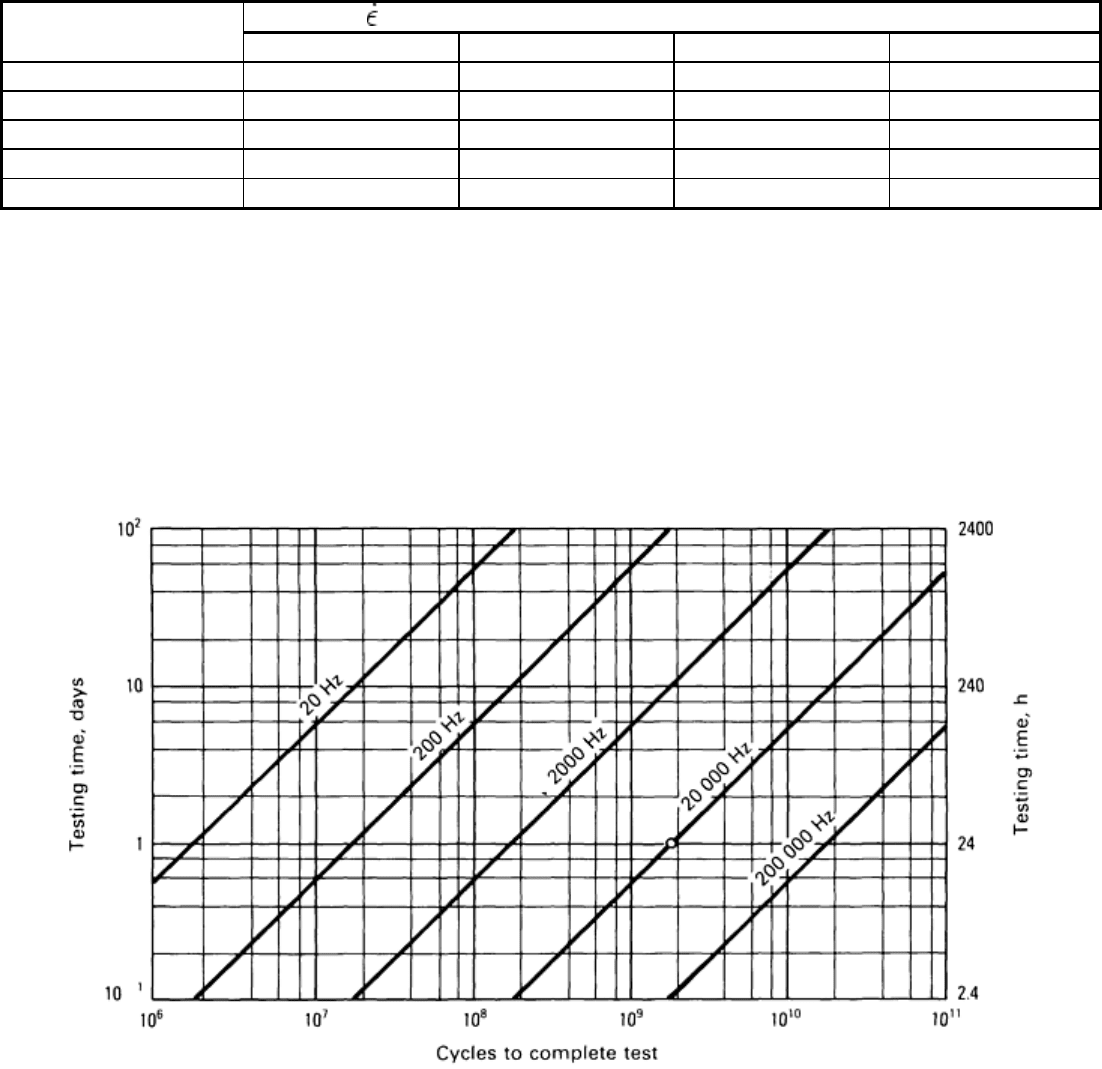
Table 1 Strain rate as a function of test frequency and strain range
Strain rate ( ), s
-1
, at strain (ε) of:
Frequency, Hz
ε = 10
-5
, m/m ε = 10
-4
, m/m ε = 10
-3
, m/m
ε = 10
-2
, m/m
10 10
-4
10
-3
10
-2
10
-1
100 10
-3
10
-2
10
-1
1
1,000 10
-2
10
-1
1
10
10,000 10
-1
1 10
10
2
100,000 1 10 10
2
10
3
Ultrasonic fatigue techniques are particularly useful for providing fatigue data in applications where strains are
being applied and removed at kilohertz frequencies; (e.g., high-frequency loading of turbine blades). In fact,
ultrasonic fatigue testing may provide a better simulation of the higher frequency vibrations encountered in
service than conventional testing does in these cases. The test method is most applicable when the test material
ultimately will be applied in service at frequencies at or near the test frequency. For applications with lower
frequency vibrations, the effect of frequency and strain rate on test results must be interpreted.
The time compression per cycle obtained with ultrasonic fatigue is pronounced. For example, a conventional
fatigue test at 1 Hz would take 320 years for a 10
10
cycle test. At 100 Hz, the test would take 3.2 years. At an
ultrasonic frequency of 20 kHz, this test would be completed in less than 6 days. The time required to complete
fatigue tests at different frequencies is shown in Fig. 1. This time compression is extremely attractive for
situations that require high-cycle data.
Fig. 1 Testing time versus number of cycles to complete test as a function of frequency
In comparison to conventional frequency testing, more test conditions and/or replicate tests can be performed in
a given period of time at ultrasonic frequency. This provides results and conclusions that are statistically more
meaningful for planning and design. On the other hand, the minimum number of cycles that can be measured
practically is limited by kilohertz cycling. This limit is 10
5
cycles for open-loop testing, with a testing time of 5
s. Shorter times (~1 s) are possible with closed-loop computer control of the test and data acquisition systems.
Similar time compression is possible in fatigue crack growth rate testing using ultrasonic fatigue. Figure 2 is a
schematic of a typical crack growth rate, da/dN, versus stress intensity curve. The time necessary to measure a
crack advance of 0.1 mm (0.004 in.) while testing at 1 Hz or 20 kHz is compared on the right side of the figure.
It is obvious that ultrasonic testing is the only practical approach to observe the extremely slow crack growth
rates that are characteristic of the threshold regime. Crack growth rate measurements as low as 10
-11
mm (4 ×
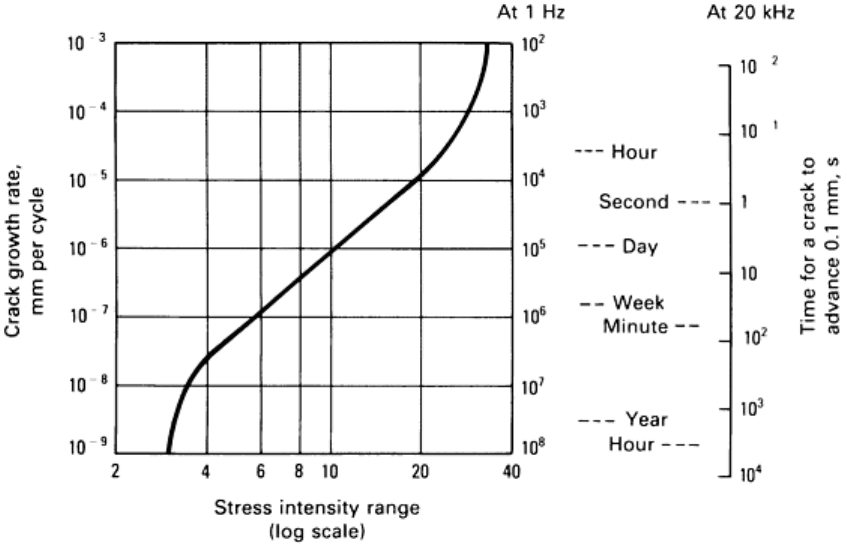
10
-13
in.) have been reported. Again, the practical upper bound of measurable fatigue crack growth rate at 20
kHz is on the order of 10
-5
mm (4 × 10
-7
in.) per cycle due to the rapid cycle accumulation.
Fig. 2 Typical crack growth rate versus stress intensity curve. Difference in time to observe a finite crack
growth increment at ultrasonic (20 kHz) and conventional (1 Hz) frequencies is shown.
The testing time compression possible with ultrasonic fatigue is an incentive for applying the technology in a
more generic sense, that is, to extend fatigue information obtained at conventional frequencies and lower
numbers of cycles to higher-cycle fatigue limits and threshold fatigue crack growth rates. Because this
accelerated test method alters testing conditions to produce fatigue in a shorter period of time, the influence of
frequency and strain rate on cyclic material behavior must be well understood.
General acceptance of ultrasonic fatigue testing also requires an understanding of how to obtain data free of
testing-induced artifacts. Improper execution can have a marked effect on the property data obtained. Much of
the skepticism that endures about the use of ultrasonic fatigue stems from earlier testing where questionable
techniques were used to measure cyclic strain amplitude and provide adequate cooling of the specimen.
Accordingly, the effects of strain rate, frequency, and test technique are the subject of most research on
ultrasonic fatigue (Ref 7, 8)
In general, testing by ultrasonic fatigue produces fatigue data that differ only slightly from those observed at
more conventional frequencies. Some data reveal a shift in the ultrasonic fatigue stress-life data (S-N) for a
given stress level toward increased lifetimes relative to conventional-frequency results (Ref 9, 10, and 11)
Other reports indicate no shift in the S-N behavior (Ref 12, 13). Most reports indicate that fatigue degradation at
ultrasonic frequency occurs by the same sequence of events as at conventional frequencies, namely, saturation
of rapid hardening, formation of persistent slip bands, formation and growth of intrusions, and crack
propagation.
Materials that exhibit clearly defined endurance limits at conventional frequencies usually exhibit endurance
limits at similar cyclic stress amplitudes at ultrasonic frequencies. Similarly, materials that exhibit threshold
stress intensities for fatigue crack growth at conventional frequencies also exhibit this behavior at ultrasonic
frequencies. Shifts in S-N fatigue behavior to higher stress levels and longer lifetimes or da/dN behavior to
slower crack growth rates do not occur for all materials tested at high frequency. Recent testing shows that the
effect of frequency on S-N and da/dN performance is primarily a function of the microplasticity and slip
character of the material system under test.
It might also be inferred that corrosion fatigue interactions should be negligible at ultrasonic frequency due to
the short cyclic period. Again, experimental results illustrate that corrosion fatigue interactions are indeed
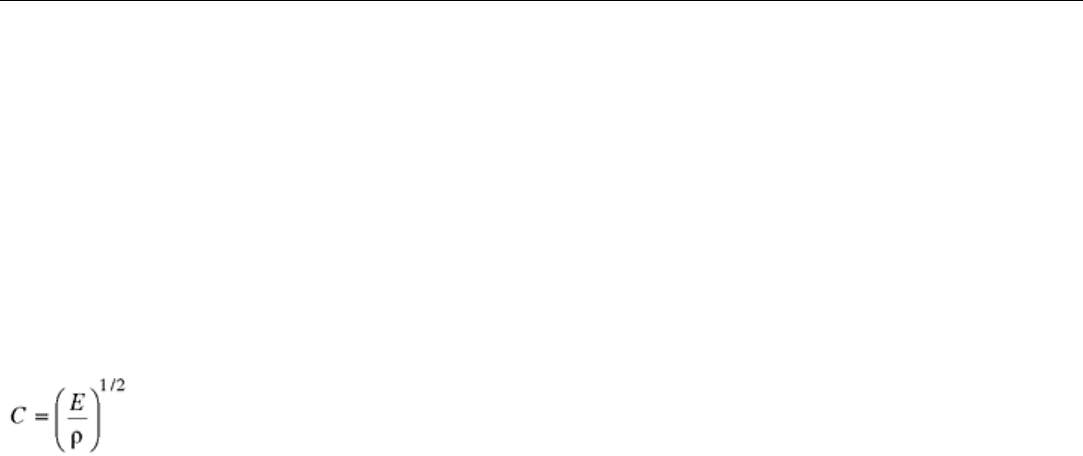
observed at ultrasonic frequencies. Recent testing shows that ultrasonic fatigue is an effective method for the
evaluation of the degradation of fatigue properties produced by environmental interactions.
Ultrasonic fatigue testing is applicable to most situations in which conventional-frequency fatigue testing has
been employed. Examples of a variety of results from ultrasonic fatigue are presented later in this article. As the
technique continues to develop, the precise limits of applicability will become more clearly defined.
References cited in this section
7. L.E. Willertz, Int. Met. Rev., No. 2, 1980, p 65, rev 250
8. J.M. Wells, O. Buck, L.D. Roth, and J.K. Tien, Ed., Ultrasonic Fatigue, TMS-AIME, Warrendale, PA,
1982
9. B.S. Hockenhull, in Physics and Non Destructive Testing, Gordon Breach, New York, 1967, p 195
10. H. Koganei, S. Tanaka, and T. Sakurai, Trans. Iron Steel Inst. Jpn., Vol 17, 1977, p 1979
11. J. Awatani and K. Katagiri, Bull. Jpn. Soc. Mech. Eng., Vol 12, 1969, p 10
12. W. Hoffelner, in High Temperature Alloys for Gas Turbines: 1982, R. Brunetaud, D. Coutsouradis, T.B.
Gibbons, Y. Lindblum, D.B. Meadowcraft, and R. Stickler, Ed., R. Reidal Publishing, Boston, 1982, p
645
13. L.D. Roth and L.E. Willertz, in Environment Sensitive Fracture: Evaluation and Comparison of Test
Methods, ASTM STP 821, E.N. Pugh and G.M. Ugiansky, Ed., ASTM, Philadelphia, 1984, p 497
Ultrasonic Fatigue Testing
Testing Principles
The principles of ultrasonic fatigue testing are quite simple. Ultrasonic fatigue is a resonant test method, in
which a large-amplitude displacement wave must be established in a resonant specimen. This wave is generated
by a relatively small periodic stimulus at the same frequency as the natural frequency of the test specimen.
Resonance is required to achieve the strain amplitude needed to produce fatigue in materials.
Displacement and strain are developed in a bar of material subjected to resonant acoustic loading. Consider a
straight bar of material having a uniform diameter and length L (Fig. 3). A sound wave injected longitudinally
into one end of the bar travels at a certain velocity through the bar, is reflected from the opposite end, and
returns to the point of entrance. The wave velocity, C, is determined by the material properties, the Young's
modulus, E, and the density (mass/volume), ρ, by:
(Eq 1)
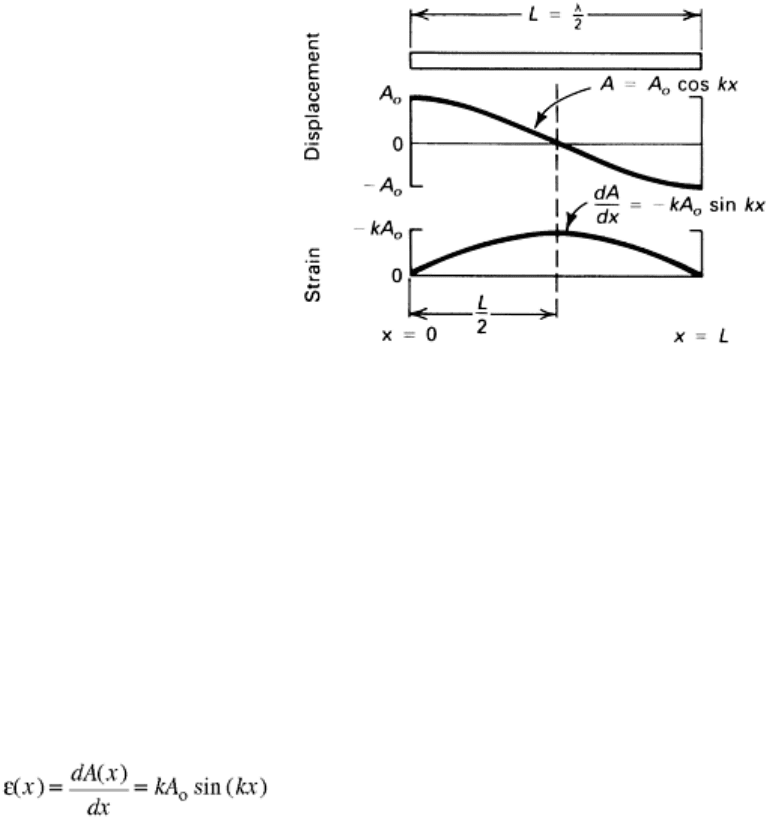
Fig. 3 Distribution of oscillatory displacement amplitude and strain amplitude over the length of a
resonant bar of uniform cross section
This velocity is the speed of sound through the material. The time required to travel the length of the bar and
return is 2L/C . If this time is equal to the period of the injected sound wave, the reflected wave will be exactly
in phase with the injected wave, standing wave conditions will be established, and the bar will be in resonance.
The length, L, of the bar is then exactly equal to the half wavelength of the sound wave. The variation of
displacement amplitude of oscillation at a point x along the length of the bar will be:
A(x) = A
o
cos(kx)
(Eq 2)
where A
o
is the displacement amplitude at the end of the bar, k is 2π/λ, and λ is the wavelength of sound at the
resonant frequency.
The strain distribution along the bar will be the derivative of the displacement amplitude with respect to
distance or:
(Eq 3)
Thus, the maximum strain occurs when sin(kx) = 1, or x = λ/4. The maximum strain varies between ±kA
o
during
each cycle. Figure 3 shows the distribution of longitudinal displacement amplitude and strain amplitude along
the length of a bar in resonance. The minimum displacement (displacement node) and maximum strain (strain
antinode) occur at the center of the bar. Similarly, the maximum displacement (displacement antinode) and
minimum strain (strain node) occur at the ends of the bar.
The stress distribution for each point along the bar is obtained by an elastic conversion of the strain distribution:
σ(x) = E · ε(x)
(Eq 4)
where E is the dynamic Young's modulus of the material. The dynamic modulus of elasticity must be
determined for the appropriate test frequency. Because of the elastic conversion, the stress maximum physically
coincides with the strain maximum. Stresses cannot be obtained independent of strains in ultrasonic fatigue
testing. Therefore, strict stress-controlled tests cannot be performed. Without independent per-cycle stress and
strain information, plastic strain-controlled tests also are not possible at this time. For more information on
plastic strain-controlled ultrasonic fatigue testing, see Ref 14.
The example of the uniform resonant bar embodies the basic concepts of ultrasonic fatigue testing. With
appropriate geometric modification, these concepts can be used to design the mechanical portion of the
converter, the acoustic horns, and the test specimen.
The major difference between a conventional fatigue test specimen and a high-frequency resonant specimen is
that the cyclic strain amplitude varies from zero at the ends to a maximum at the center, rather than being
constant over its entire length. This confines fatigue damage and, hence, fatigue crack initiation and
propagation to the center of the specimen. Because there is minimal strain at the ends of a resonant bar, the
requirements for attachment of one resonant bar to another and for gripping the specimen also are minimal.
To produce strain in a bar, only one end of a resonant bar specimen must be in acoustic contact with the source
of the sound waves. This permits the testing of thin materials under reversed tension-compression loading
without risk of buckling the specimen. Consequently, sheet, tubing, and wire specimens may be subjected to
fully reversed loading during ultrasonic fatigue, whereas more complex gripping and alignment techniques are
required to accomplish similar tests at conventional frequencies. The large and cumbersome arrangements for
gripping the specimen that often are required in conventional fatigue testing are not needed in ultrasonic
fatigue.
A specimen with a free end also provides the ultrasonic fatigue system with a degree of portability that is not
easily obtained with conventional-frequency test methods. Fatigue testing can be performed with the specimen
in an operating environment by feeding the free end of the wave train through an access port to the
environment. Similarly, testing can be performed under the view of an optical or electron microscope without
the need of complex load-transmitting stages.
Cyclic straining can be achieved in a bar at any desired resonance frequency by appropriately choosing (tuning)
the length of the bar. For a bar with a uniform cross section, the required length for fatigue testing will be λ/2 at
the resonance frequency. For bars with variable cross sections or dumbbell specimen geometries, the resonant
length generally is shorter than the resonant length of a uniform bar at the given test frequency. Thus, each
component in a resonant testing system must be designed (tuned) to the resonance frequency to transmit the
acoustic energy efficiently into the test specimen. The equations developed by Neppiras (Ref 15) are helpful in
calculating the appropriate resonant lengths for variable specimen section geometries. These equations are
presented later in this article in a section on specimen design.
References cited in this section
14. P. Bajons, in Ultrasonic Fatigue, J.M. Wells, O. Buck, L.D. Roth, and J.K. Tien, Ed., TMS-AIME,
Warrendale, PA, 1982, p 15
15. E.A. Neppiras, Proc. ASTM, Vol 59, 1959, p 691
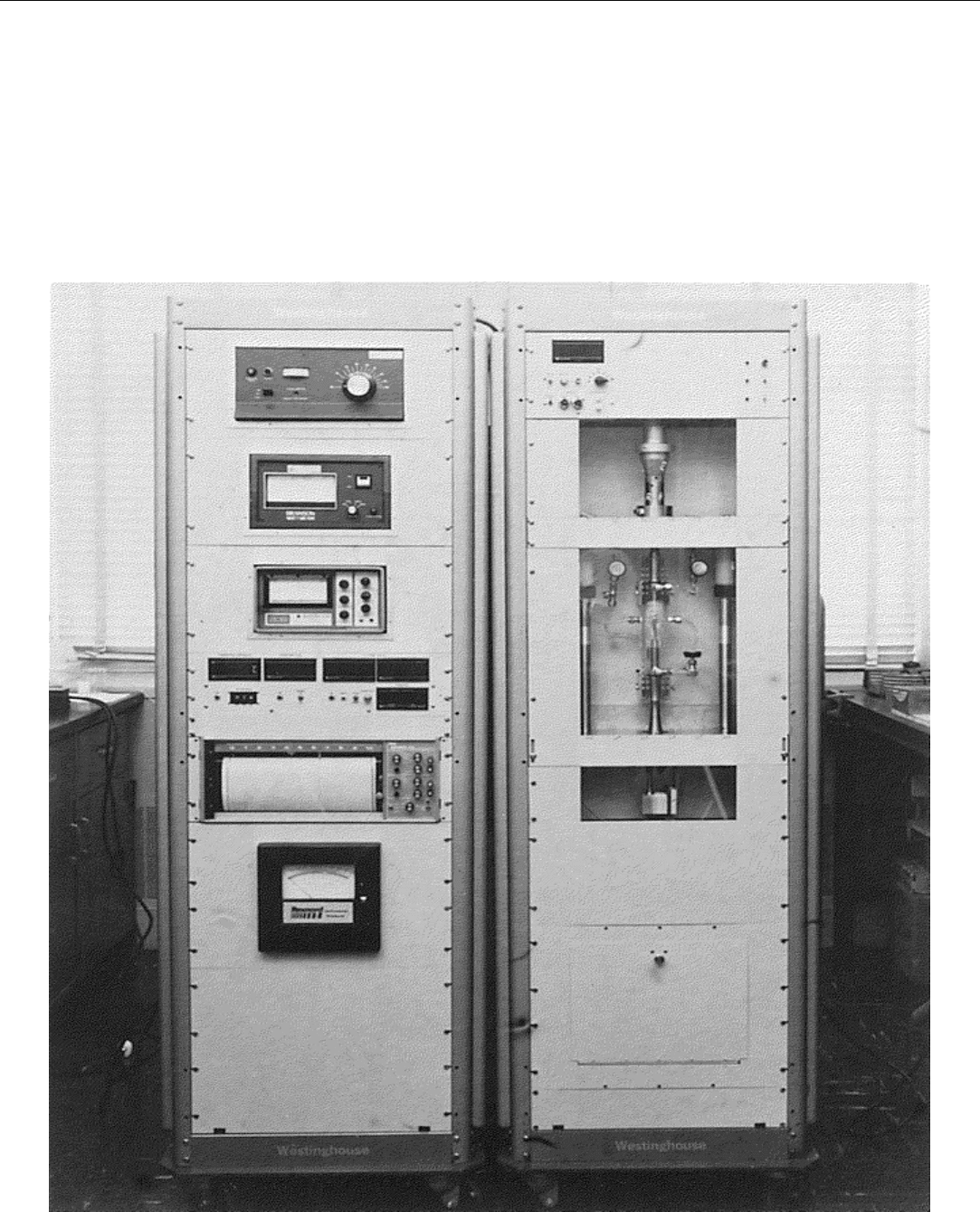
Ultrasonic Fatigue Testing
Testing Equipment and Methods
Packaged ultrasonic fatigue test systems, with one exception, are not commercially available. However, an
ultrasonic fatigue test system may be constructed easily from commercially available parts. Tien et al. (Ref 16)
describe the construction of a test machine using ultrasonic components normally used in ultrasonic joining
processes. This machine, an open-loop test stand, contains the basic equipment needed for testing. Information
on test stands with additional capabilities—including double converters, mean loading, electrochemical cells,
and computerized control systems—can be found in Ref 17, 18, and 19, and 20. A portable test machine
including ultrasonics, external loading frame, environmental system, and test chamber is shown in Fig. 4.
Fig. 4 Portable 20 kHz corrosion-fatigue machine with mean load capability
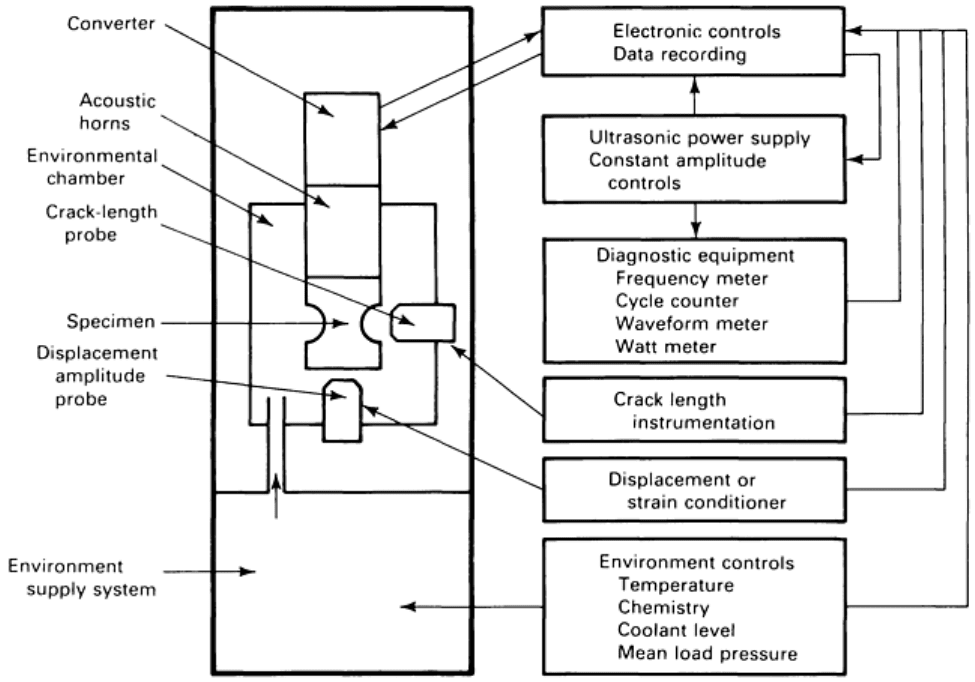
Figure 5 is a schematic of a typical ultrasonic fatigue test machine. The machine is centered around an acoustic
wave train composed of a sonic energy converter, a series of acoustic amplifying horns, and the test specimen.
A typical wave train is shown in Fig. 6. The acoustic energy is supplied by a high-frequency power supply. An
amplitude-measuring device and a means of dissipating the heat generated by the deformation process are also
necessary. This basic equipment is appropriate for stress-life (S-N) or fatigue-crack-growth rate (da/dN) testing.
A frequency display, cycle counter, and temperature-measuring equipment are used to monitor the test.
Additional monitoring equipment is necessary to measure crack length in da/dN testing.
Fig. 5 Schematic of an ultrasonic fatigue test system

Fig. 6 Typical 20 kHz acoustic wave train
Power supplies for ultrasonic fatigue testing typically range from 500 to 4000 W of electrical power. The actual
output to the specimen is lower than this during normal resonant operation. Most power supplies have built-in
feedback circuits, which produce a constant-amplitude oscillation in the converter. Some power supplies have
circuits for automatic shutoff when the specimen or any part of the wave train goes out of resonance. This is
useful for S-N testing. The fatigue crack at failure will be some fraction of the cross-sectional area when the
power supply shuts off. This fraction can range from a few percent to 50% of the cross-sectional area,
depending on the automatic shut-off controls.
Sonic Converters. Acoustic resonance is developed in the converter by application of the electrical excitation
provided by the power supply. The converter generates a standing acoustic wave that produces a cyclic
displacement at the end of the converter. The acoustic wave proceeds down the rest of the resonant wave train
to the specimen. Variation of the displacement and strain amplitudes along the wave train is shown in Fig. 7.

Fig. 7 Variation of the displacement and strain amplitudes along the acoustic wave train
Several cycles of application of the electronic stimulus of the power supply are required to achieve the
maximum resonant amplitude in the converter and the rest of the wave train. The rise time of the converter
should be know when considering a pulsed mode versus continuous-cycling mode of an ultrasonic fatigue
system. In a pulsed-mode operation, the specimen is subjected to a series of pulses (~1 s) of high-amplitude
cycles followed by a cooling period without cycling. Rise time of ultrasonic equipment varies among
manufacturers. If rise time is longer than pulse time, variable-amplitude test conditions exist. Pulsed-mode
operation has been suggested by some investigators to overcome the rapid heating manifested by high-damping
materials upon cycling. Ultrasonic fatigue systems take several cycles for the maximum resonant amplitude to
be developed. Hence the tendency to overshoot the desired amplitude setpoint on the first cycle is small.
Converters for generating ultrasonic displacement waves generally are magnetostrictive or piezoelectric
devices. Most modern converters use piezoelectric materials for conversion efficiency. Magnetostrictive
devices have a low (20%) conversion efficiency. Piezoelectric converters with efficiencies greater than 90% are
readily available.
Converter types and designs vary among manufacturers. Some piezoelectric devices use lead-zirconium-titanate
(PZT) for the converter material. The end displacement amplitude developed by a 20 kHz PZT converter ranges
from 0.010 to 0.020 mm (0.0004 to 0.0008 in.). Piezoelectric plastic materials are being considered for higher-
amplitude ultrasonic converters.
A single- or double-converter arrangement can be used to drive the specimen into resonance. In a single-
transducer system, one end of the specimen is coupled to the converter and the other end remains free. In a
double-converter system, both ends of the specimen are coupled to two coaxial antiphase-driven ultrasonic
converters (Ref 17). The advantage of a double-converter system is its symmetry.
A comparison of the displacement, strain, and specific energy parameters for a high-damping perspex (Lucite)
test specimen tested with a single- and double-converter system is shown in Fig. 8 (Ref 21). The symmetry of
the converters is reflected in the greater symmetry of the displacement and strain distributions produced in a
resonant specimen. While equivalent testing conditions can be produced with either single- or double-converter
systems through precise design of the acoustic elements, the double converter is less sensitive to small
differences between the resonance frequency of the specimen and the driving frequency of the converter. Data
also show that the double-converter arrangement is less sensitive to detuning of the specimen due to changes in
elastic properties or the growth of a fatigue crack. Fatigue crack growth testing benefits from the longer crack
length attainable with a double-converter system before significant frequency degradation occurs.
